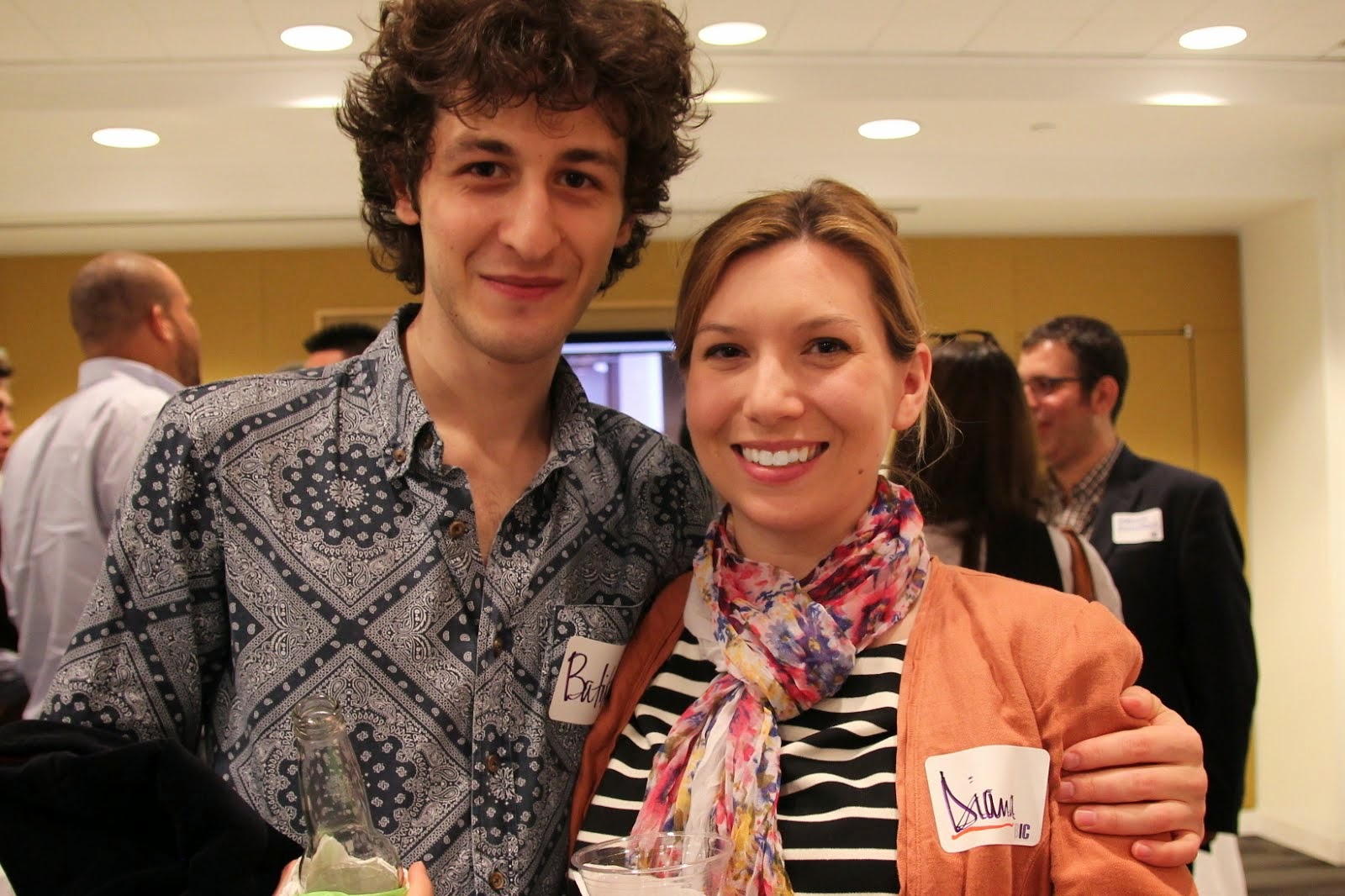Taking measure of the measurers: the 2013 Advertising Research Foundation Audience Measurement Conference
The Advertising Research Foundation (ARF) sponsored its annual Audience Measurement Conference, “Measuring the Unmeasured,” June 10-11, 2013 in New York for an enthusiastic and optimistic crowd. Presentations were, as typical of such conferences, dominated by the major suppliers of the industry – Arbitron, comScore, GfK, Nielsen and a handful of others. Some distinguished, major advertisers (including AT&T, Bank of America, Diageo, Facebook) were present to showcase impressive media research initiatives, and some of the leading media companies made appearances (ABC, NBC, Turner). Ad agencies were notable only for how few attended, and PR people were missing in action. (All company lists are illustrative only; others attended.)The demographics of the presenters and attendees are remarkable in light of the dominant theme (implicit and often explicit) of most of the conference: we live in a multi-platform world; consumer impact is never achieved through one channel, but by inputs (messages) from multiple sources or -- as it was most often characterized – Screens (broadcast and cable TV, desktops, and mobile – both smartphones and tablets). Intentionally or not, the unspoken dominating perspective was that only Screens (and occasionally radio) really matter anymore. That’s a fundamentally problematic unspoken proposition in a multi-channel, integrated communications ecosystem, but probably reflective of the roots and habits of the ARF members.
The focus on Screens also dominated the implied reference in the title of the conference to “the Unmeasured.” The vast majority of the content at the conference focused on how to identify, monitor, analyze, and assign value to Screens and the behaviors of people behind screens. The work being done in this area is without a moment’s doubt very impressive. Considering the concept of multiple Screens barely existed three years ago, the ARF community has jumped into this huge change in the environment and developed some fairly awesome initiatives to track, understand, and evaluate the impact of Screens on consumer markets.
One of the kick-off presentations by Artie Bulgrin, SVP Research + Analytics at ESPN, was illustrative of much of what was presented across the two days. ESPN is undertaking a significant on-going to initiative to track ESPN consumers across five platforms: TV, PCs, smartphones, tablets, and radio (See ESPN announcement.) Bulgrin and his team have put together an array of the leading research industry providers for a custom-built methodology to answer ESPN’s 5-platform questions. Throughout the conference, one example after another highlighted major advertisers putting together collaborations of research suppliers to custom-build data sets that can help develop insights into how consumers are using, and being influenced, by the Screens.
The confidence and cheerfulness of the conference was probably rooted in the emerging sense from this ad research community that ‘We’ve got this under control.’ This same ARF conference in 2012 had for its theme, “The Measurement Crisis” – a far cry from the more self-assured (a little swagger?) 2013 theme of “Measuring the Unmeasured.”
You could hardly avoid the sense of social / digital / mobile media as having been tamed, after all, by the persevering and intrepid ad research community. ‘It took us some time. We were kind of shaken last year this time. But we marshaled our wits and our resources. We partnered with other companies – a bit of “united we stand; divided we fall.” But we got a handle on this. We corralled all this pesky new consumer behavior and changing technologies into our methodological frameworks. We don’t have all the answers yet, but we pulled through.’
This cheekiness is well earned, as was particularly evident in the arresting case studies presented, not only by ESPN, but by AT&T, Bank of America, Colgate-Palmolive, Facebook, and others. But the ad research community doesn’t recognize how much more of the Unmeasured they haven’t measured yet. Most of the presentations – insightful and worthwhile – still see digital and social primarily as channels for pushing out crafted, calculated messages, essentially as ad placement channels. Despite the lip service to engagement, there was virtually no discussion of what it actually means to engage (not just to send out minutely, exactly tailored messages and creative variants to exactly the right targeted people). Virtually no consideration of real online discussion or customer relationship management. One exception was the presentation from MotiveQuest, which – in the process of showcasing its Advocacy Index product – at least acknowledged the impact of (uncontrolled, independent, un-paid) brand enthusiasts.
A few side panels addressed the ‘unmeasured’ Hispanic market; one session at the end of the second day addressed local media (again, only Screens and radio). Those topics were clearly sidebars to the big story of the conference. Even more striking, there was not even a nod (pro forma or even dismissively or patronizingly) to any kind of earned media (public relations), non-screen word-of-mouth, or public events (for example – industry trade shows to cite the in-your-face example). The world of Measuring the Unmeasured is a peculiarly Screen-centric world. (But the ARF is the ARF, after all, and it’s rather beside the point to belabor it. When you go to the PR research conferences, you’d rarely get an acknowledgement that paid media has any impact.)
(Integrated marketing or integrated communications is not being integrated at the level of the ARF or the PR research community. More often you find that CMO or CEO perspective coming from the consultants and technology analysts. A blog post by Tobias Lee, CMO Thomson Reuters, Tax & Accounting Division, at COM.com serves as just one example of where integrated communications thinking is really present: “Critical to marketing today is integration across functional departments, such as sales, marketing, and customer service, and also across marketing mediums . . . with the right people, processes, and centralized technology, integrating your marketing efforts in the age of the social Web becomes much more feasible.” The consulting and tech firms are also stepping up with the real integrated or CMO perspective with products, just for one example, such as IBM’s enterprise marketing management suite for customer analytics and multi-, cross-channel campaign management.)
The really discordant, if entertaining, note at Measuring the Unmeasured, however, was the keynote speech. Bob Garfield, MediaPost columnist, NPR’s On the Media co-host, long-time former Advertising Age columnist, and author, most recently of Can’t Buy Me Like (Portfolio, 2013; co-authored with Doug Levy) delivered the Tuesday luncheon speech with good humor, color, and charm. And he essentially told the audience that their whole enterprise, their business and their industry, research-driven consumer advertising, is anachronistic and doomed (at least in the form that we all know it).
If the ARF concept of “social” is weak, Garfield’s concept of “social” is strong. One anecdote after another, in Can’t Buy Me Like, and in his keynote speech, called into the question the ultimate (and future) efficacy of advertising in effectively pushing messages out to receivers (by any Screen). He concluded his speech with a Santander Bank anecdote (recounted in detail in Chapter 10, Bank and Trust, of Can’t Buy Me Like) in which he claims that some funny-cute YouTube baby/kitten videos distributed courtesy of Santander had more positive consumer impact than three strategically conceived, professionally produced advertisements (read the book and decide for yourself).
Garfield, by implication, threw down the gauntlet: ‘Sorry. No, ad research community, you haven’t tamed social/digital media and brought it under your control. “Social” is about authenticity (real, not a researched, calculated and created, positioning of authenticity).’ Garfield’s challenge did not shorten the line of ad researchers, copy of Can’t Buy Me Like in hand, who waited over an hour for Garfield’s autograph.
| This post also appeared at commPRO.biz, June 11, 2013 |








